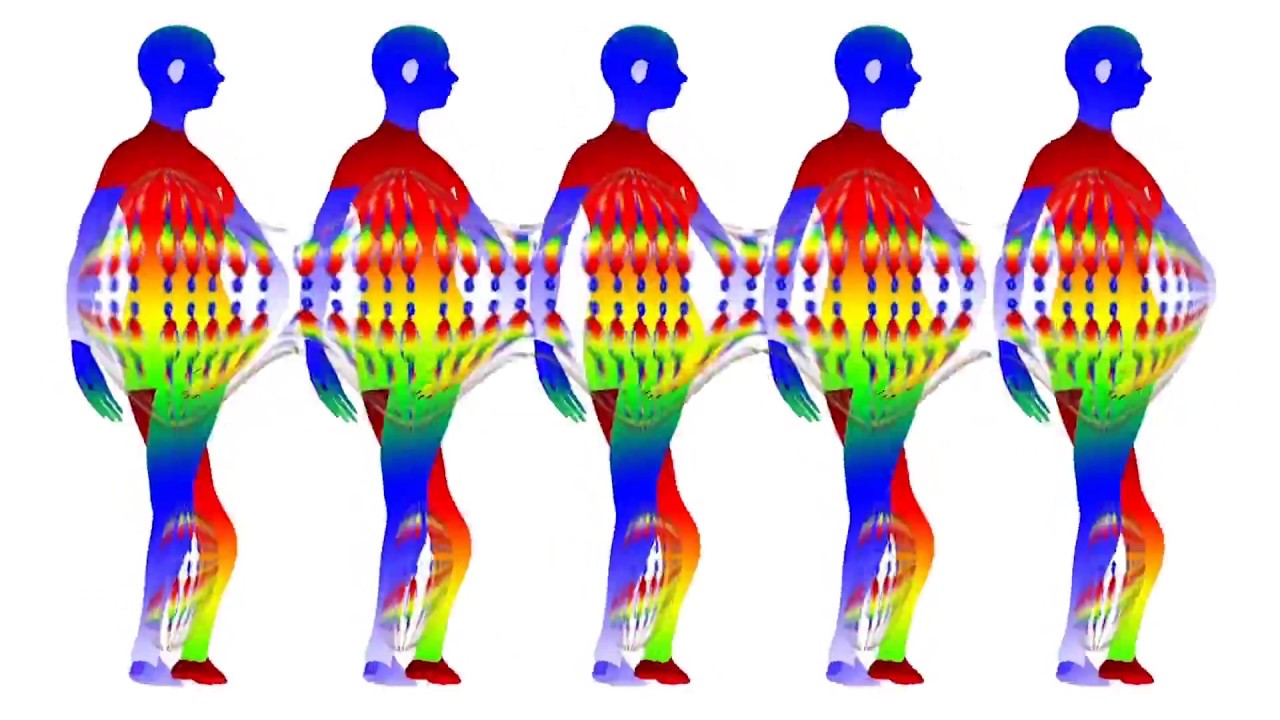Portland duo Visible Cloaks aren’t quite done with 2017 just yet. Following the release of breakthrough album Reassemblage earlier this year via RVNG Intl. – an album that introduced their digitally glossy sound that pulled in all manner of influences from across the Japanese ambient and new age and Italian minimalism world, amongst others – in December the duo of Spencer Doran and Ryan Carlile will release Lex.
Billed as a mini-album, Lex expands upon a number of the sounds and ideas explored across Reassemblage, once again putting to use various unexplored software programmes to create synthetic but rich, tranquil melodies. One constant running through the record is the presence of a narrative told through entirely unintelligible, alien speech. Doran bills the speech himself as “a fusion of many”, explaining that it was created by putting a number of words and accents through a language translation software programme until they had evolved into something entirely new – “almost as a way to generate poetry”.
Visible Cloaks’ origins can be traced back to a 2010 mix by Doran shared via the blog of record label Root Strata. Fairlights, Mallets And Bamboo Fourth World Japan, Years 1980-1986, which also went on to spawn an additional volume, took in a wealth of the music by which Doran had long been fascinated. Featuring the likes of Yellow Magic Orchestra (plus solo material from members Haruomi Hosono and Ryuichi Sakamoto), Yasuaki Shimizu, Phew and more, the mix considered the idea of a ‘fourth world’ element in Japanese music. Sidestepping some of the more questionable elements of Jon Hassell’s interpretation of the concept, Doran’s mix offered a look into some of the high-end electronic experimentations that many Japanese musicians were indulging in through the 1980s.
Citing his long-held interest in high quality sonics, Doran says that records such as the 2015-reissued Utakata no Hibi by Japanese ensemble Mariah reminded him of big budget US albums by acts like Steely Dan and Fleetwood Mac. “You had all these Japanese albums working in the most high-end studios you can imagine with some of the newest tools that they could use at the time,” he says. “I think BGM by Yellow Magic Orchestra was one of the first records to use an 808, so there was this desire to use all the newest tools possible to make music. That’s similar to what we are trying to do, trying to use the most contemporary music technology and software that we can to explore what’s possible with it while it still feels fresh and doesn’t have all these established parameters.
Ahead of the release of Lex in December, as well as an appearance at Portugal’s Semibreve Festival at the end of this month, I connected with Doran over Skype on some downtime during the pair’s UK tour to discuss Jon Hassell’s interpretation of fourth world music as well as the cross-pollination of different cultures and sounds.
I noticed in the announcement of Lex that there was the idea of alien speech running through the album, as well as a reference to building on fourth world concepts to create a kind of language that you describe as “a fusion of many”. Does this thinking support the idea of open borders and breaking down barriers to share between cultures?
Spencer Doran: It was a way to deconstruct language and get at something that almost didn’t have meaning, to work with language as pure sound. Also, it could offer a utopian projection of what language might potentially become if all cultures were merged together and perhaps borders were broken down, which is of course a similar idea to fourth world and those kinds of concepts.
I’m interested in whether you would have any criticisms to make of concepts like fourth world too though, and specifically with Jon Hassell’s interpretation of it, because it’s not without its issues of course.
SD: Well, the idea of fourth world initially comes from even further back than Jon Hassell’s interpretation, to Stockhausen and his concept of the global village. There were these pieces where he was combining the different national anthems of the world – cutting them up so they were merged together. Jon Hassell may have, at times, gone down a fairly dodgy line though. I don’t know if you’ve read any recent interviews with him, but he had this new idea that the northern and southern hemisphere were the northern part of the body and the southern part of the body. So, the northern part in that theory was where all the intellect is and the southern part relates to sexual energy, and all these very questionable ways of exoticising different cultures. He’s definitely made some amazing music that I’ve been influenced by, but the whole idea of a ‘coffee-colored’ classical music world, which is what he called it, is quite problematic.
Of course these are very important considerations when taking in influence from other cultures as we know. I know you’re very aware of the pitfalls of that and of how these things can be and should be done properly.
SD: I think the idea of cultural influence, and merging different sounds together in that way, can look from a distance like you’re enacting those same problematic tactics. It’s supposed to be an intentional picking apart of that concept and what it really means, and what the problems of that are – not that those questions are necessarily being answered, but more just that they are being brought up as a topic of discussion. One of the things that I think is interesting about not just the Japanese ambient influence in our work, but also Japanese culture at large, is that in the 1980s it was very referential to France – there was this francophile tone to a lot of it. There was a really deep obsession with people like Erik Satie at that time, so I think this has always been the way that culture evolves, and it’s become hyper-extended in the age of the internet, global communication and air travel.
I imagine it’s been very encouraging to see a lot of the music that you’ve been influenced by and listening to for many years now, such as records by people like Midori Takada and Hiroshi Yoshimura, reaching much wider audiences away from Japan now thanks to recent reissues and renewed interest.
SD: It’s been great. We played that show with Midori at the Barbican recently, and it was great to see her get a standing ovation from the audience. That’s not to say that I have any kind of role in that. I try to be as passive in the communication of musical knowledge as I can and not take any role of authority. I’m definitely doing all that I can to have Hiroshi Yoshimura’s story be told with the new label [Empire Of Signs, co-run with Root Strata label head Maxwell August Croy]. Maxwell is actually over in Japan right now meeting with Yoko, Hiroshi’s widow, who we’ve been working closely with and uncovering all kinds of unknown information. There’s a lot of his story that has yet to be mentioned in western circles. The way that information tends to flow now is that what people can find on Google is what they might think the truth is.
Of course, the first Fairlights, Mallets and Bamboo mix you did was based around fourth world Japanese music, and it’s been a big reference point for people since in discussing your music. Do you think that perhaps directed the conversation around Reassemblage a little too much?
SD: I think that’s partly true, but it’s also just to do with things like how the press release was worded, and the narratives are built from there. It’s funny because while that’s influence on our music, I also feel like we’re trying to do something else with different tools and different intention. I guess it gave it a narrative that was easy to comprehend though, and easy to map the interest that was already there onto our own music, which of course has its pitfalls. I’m interested in a lot of different music from a lot of different places. Franco Battiato – who was kind of part of the prog world at the first in the 1970s but made all of these minimalist modern composition pieces around then too with people like Giusto Pio around him – had this movement that followed into the 1980s, and then he became a big pop star strangely. His music had a deep impact on what I do and it has this hard to pinpoint spiritual, meditative quality to it. A lot of his music has this traditional Sufi influence to it which is fed through a romantic Italian direction. In the 1990s, he started making operas which are actually quite amazing. The Translations mixtape that came with Reassemblage features a lot of his music.
Could you talk me through some of the digital processes going on in the new record> For example, there’s the use of language translation software?
SD: That all stems from myself and Brenna Murphy, who has been working on all of the videos and artwork for the releases. She’s an old friend of ours. We got commissioned to do a 15-minute film, ‘Permutate Lex’, and that is where all the speech software and generated language came from because we were trying to think of a way to add more narrative. It’s something that I’d experimented with in the past as an artistic practice, almost as a way to generate poetry. I did new variations of that to use as dialogue for the film – obviously all very abstract though – to give it a structure and build the film around. I have a programme called Infovox Voice Manager, which is a contemporary text-to-speech programme, and it’s designed to be used with a multitude of languages so you can download a bunch of accents. I would feed an original piece of text into the software and then translate it into one language and then another one followed by another one and so forth, then have it finally read back in an entirely new dialect.
Did the title for Lex come from the use of language translation software across the record then?
SD: Yeah, I think Brenna [Murphy] suggested that based on it being this lexical permutation of different languages that were being refracted and manipulated. We just shortened it to ‘Lex’ as if it was a character, so on the record, it looks like there’s a person named Lex on the cover which it isn’t necessarily true. It’s good to create an open-ended meaning and allow people to read into it how they might like to. It’s good to leave some things open-ended because you can get a lot more from things if you’re able to project your own interpretations onto them.
How have you been translating the albums into a live setting then? Does a lot of improvisation come into play?
SD: Definitely. We mostly control MIDI information. Ryan has a digital sax, a Yamaha WX11 from the 1980s that is a really early model, and it sends out MIDI information and breath control. You can have an input which modulates the breath function so you can control the volume more for example. A lot of it involves him controlling virtual instruments on a computer and I’m able to stack and manipulate them from there, and double it up onto different instruments and offset them to create a sense of an ensemble that is actually just from one instrument. I also have something called a Malletkat which is a MIDI controller which I use for vibraphone, marimba and gamelan sounds. I play that using mallets. We play a lot of the tracks on the records but in a deconstructed form, which allows us to diverge from the strict contents of the recorded material while using the same kinds of sounds and controlling it all live.
Visible Cloaks’ Lex is released via RVNG Intl. on December 8. They play Semibreve Festival in Braga, Portugal, which takes place from October 27-29, later this month. For more information and tickets, click here




